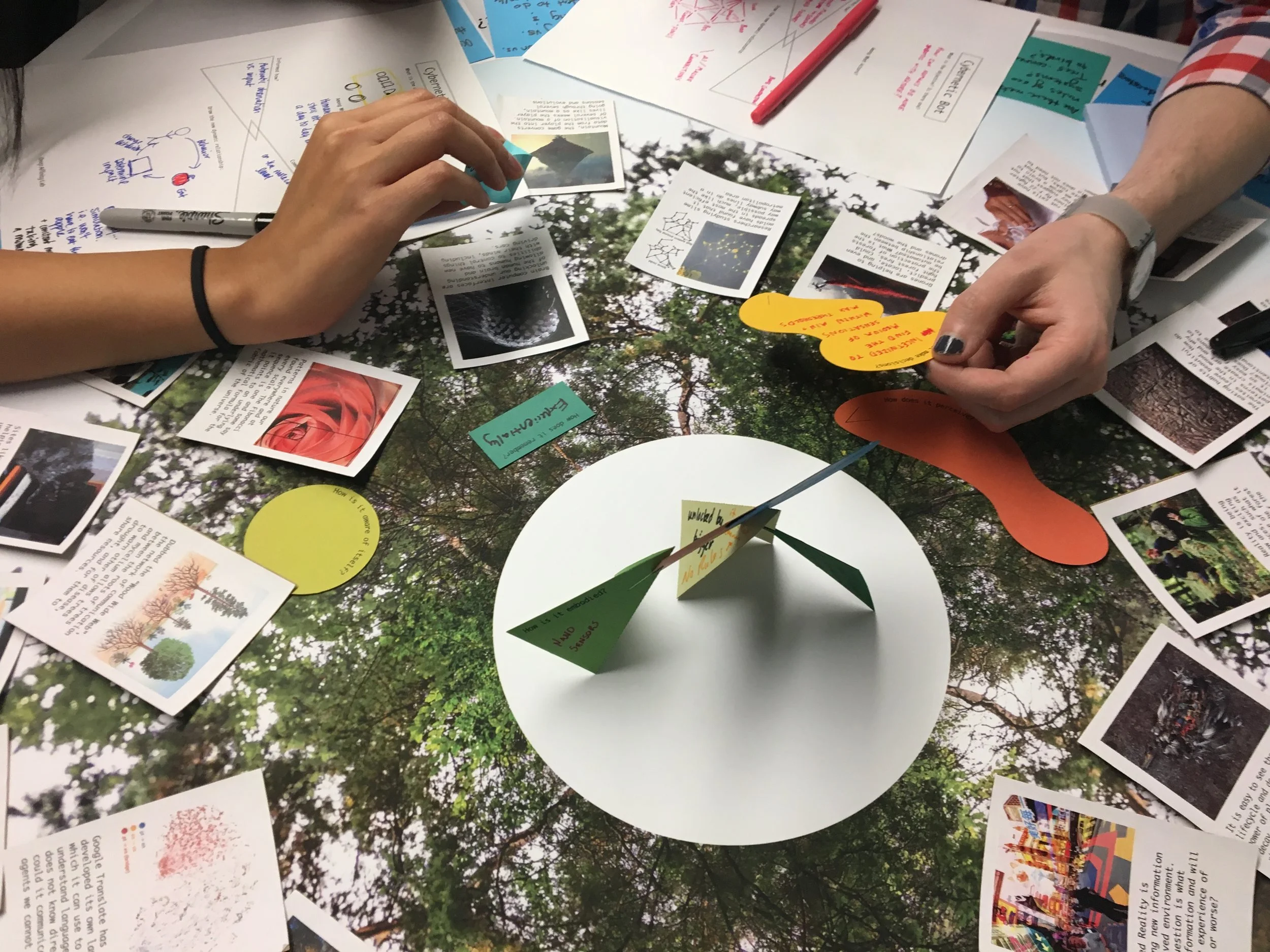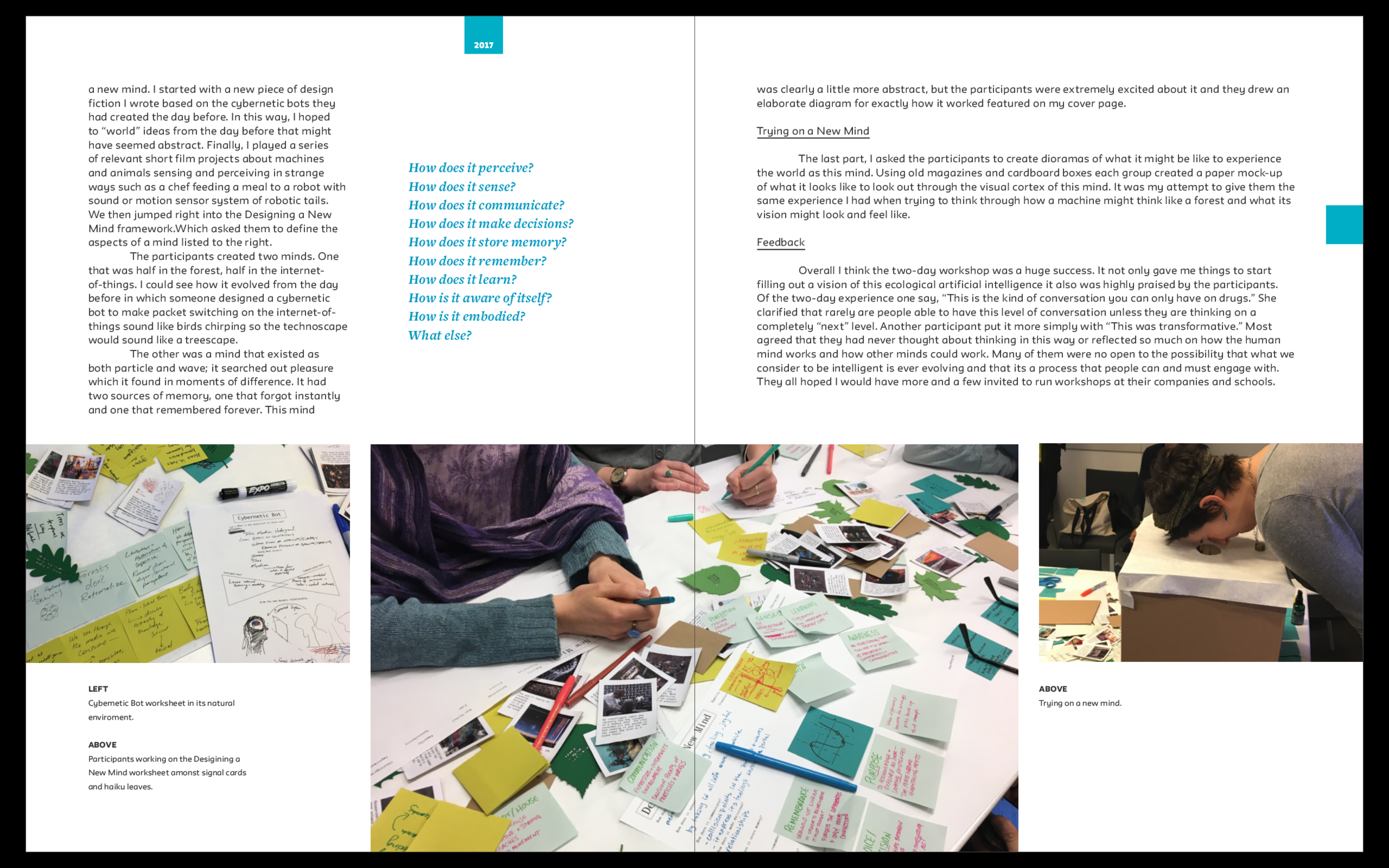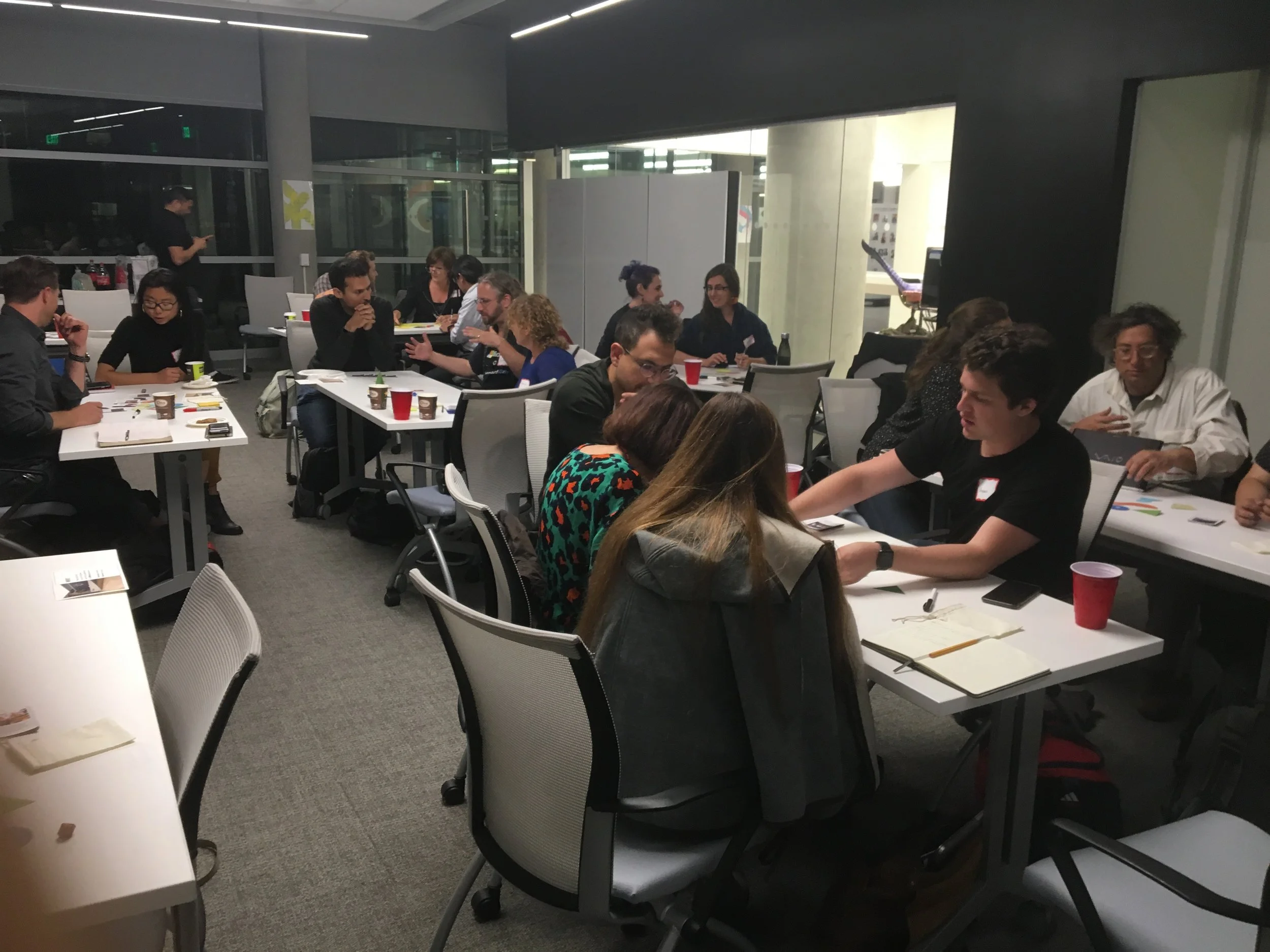
Deep Affinity Lab
A Social Speculation Laboratory
Director, Speculative Designer
Deep Affinity Lab
The proliferation of artificial intelligence provides humanity’s greatest ontological opportunity. As the things we design, design us back, The Deep Affinity Lab proposes that we seize this opportunity by designing our intelligent machines and interfaces with a focus on ecological empathy, understanding, and connectivity. In this way, climate change and the rise of intelligent machines are not existential threats, but instead solutions to each other.
From machine learning helping to decode the language of bats to drones fighting forest fires to augmented reality interfaces reading the nuanced states of plants, a new narrative is already emerging. Borrowing from the social lab’s movement, the Deep Affinity Lab is a social speculation laboratory setup to evolve this eco-cognitive vision by leveraging the imaginative potential of speculative design through a portfolio of transformational engagements. After building a community of over a hundred people, the lab has developed new design principles for how speculative design can scale and successfully operate more systemically. Below is the chapter I contributed to the Transdisciplinary Design Thesis Book for 2017.
My aim is to build momentum for this a new vision of artificial intelligence which places interconnection between human and nonhuman actors at the forefront. As we know from the work of ontological design, the technology we design ultimately designs us back. Why not use this opportunity to design ourselves to think and therefore act more sustainably? As dreams of artificial intelligence are currently dominated by silicon valley, the aim becomes less proposal oriented and rather one of psychological immunization. We must realize that when we design AI, we are just redesigning ourselves. I am proposing that we develop a naturalist artificial intelligence focused on ecologically that facilitates a making of kin and a recognition of deep affinity. In this way, we can heed the ontological opportunity presented by the design of artificial intelligence.
“ Perhaps the central emerging challenge for foresight practitioners has less to do with generating and broadcasting ideas about the future than with designing circumstances or situations in which the collective intelligence and imagination of a community can come forth.”
I began this project from a discussive space by designing a series of speculative probes meant to judge the current climate of imagination surrounding the idea of the nonhuman. I quickly found these probes pointed to a much more complex role of speculative designer. To do this I repurposed the characteristics of a social lab who’s home has typically been in the field of social innovation and bring it to the space of speculative design. The goal was to bring together various stakeholders to expand each other's considerations for the future of artificial intelligence particularly as it relates to ecology. I started with the questions, How might machines grant us new perception of the nonhuman? How might machines facilitate a more dynamic relationship with the nonhuman? I then let the vision grow organically, letting these original questions and signals guide our strategic vision. I launched the lab with a two day immersive workshop in which people explored the possibilities of intelligent machines interfacing with forests. Building on the success of the the immersive workshop I began to develop a “portfolio of engagements.” I streamlined the experience by adding elements of play, out of which came the Future Minds game and a work of design fiction I called the “documented imaginary.” I launched a website, started a newsletter, and begun to host a regular meet-up. In this way, a community has begun to form around an evolving vision of eco-cogontive AI.
Through this project, I have begun to define is a new role for speculative designers. This role would perhaps be more about fueling an imaginative discourse on a community level. Furthermore, I propose that the social speculation lab is the means by which speculative design can operate both top-down and bottom-up at what Jamer Hunt calls the mesoscale. The social speculation lab builds the scaffold for a new imagination to take hold and then creates the platform for participants to engage. Then by forming a community of both the people making technology and using it, a system of feedback looks can distribute and evolve a much more powerful imaginary throughout the system. Whereas social labs address systemic problems, the social speculation lab foresees problems and engages them with critical imagination. I have adjusted the social lab criteria to meet the demands of the social speculation lab.
From Social to Communal
Social Labs team up stakeholders around a problem, because no one is yet aware of their stake in the alternative future, but a social speculation lab must operate in the service of building this community around a vision.
From Experimental to Evolutionary
Whereas the social lab praises experimentation and iteration because it is in service of solutioning, the social speculative lab must value evolution because it is in the service of the growth and development of a collective imagination.
From Systemic to Transformative
The social lab must strive to operate systemically otherwise its is solutions will not be effective. The speculative engagement already operates at a systemic level by intervening in the psyche of those capable of changing the system. Engaging with the imagination of the makers is the systemic intervention, but for that intervention to be successful it must be transformational.
What has evolved is an active and passionate community of over one hundred people interested in taking artificial intelligence in this new direction. This is a community of people actively engaging, building and driving this new narrative. I am working on making more connections with some of the artificial intelligence incubators which would be my direct target audience in order to have the systemic change I am pushing for. The next gathering will be happening in June and be about voice. I would like to begin to make more objects and experiences that communicate more grander visions possible futures could take form. I have applied with the Deep Affinity Lab to NewINC and will also be applying for the artist in residence at ThoughtWorks. Over the next few years I would like to see the concept of Deep Affinity grow as well. Ultimately, I want eco-cognition to become the dominant goal of artificial intelligence research. Recently, Liam Young stated that he believe “speculation is activism.” In Dunne and Raby’s Designed Realities Lab the stated mission is: “ to contribute to a public environment where new visions can flourish, imagination thrives, and alternative technological narratives can begin to emerge more organically, bottom-up rather than top-down.” My hope is that the work I have outlined here can contribute some new modes of operation for a growing field of design as it moves into a new phase of action and discourse. After all, even fictional President Frank Underwood from House of Cards proclaims that “imagination is its own form of courage.”





















